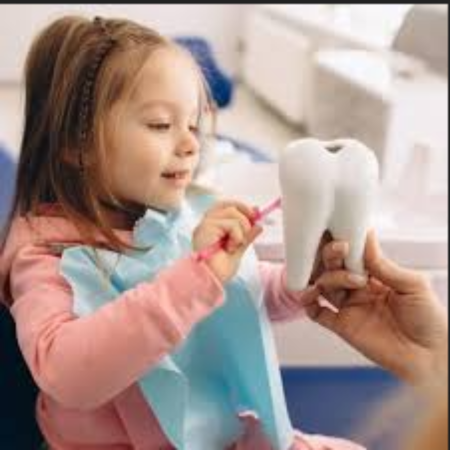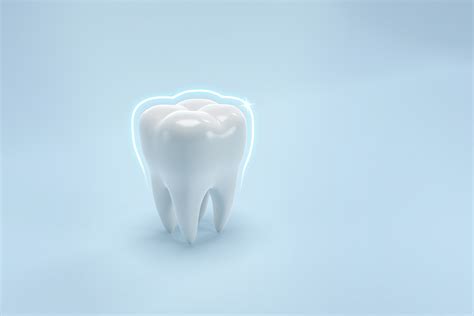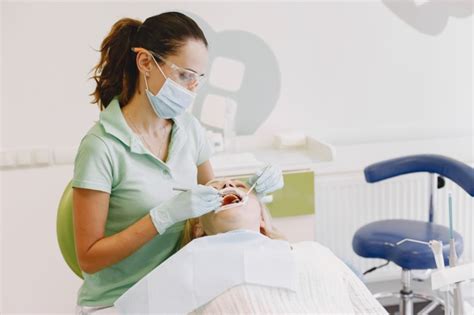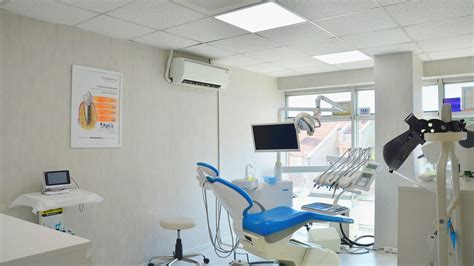Abstract Introduction Dental caries in preschool children, defined as Early Childhood Caries (ECC), continues to be Lahza important health sorun in most countries worldwide particularly in socially vulnerable population because of its early onset and high prevalence, as well as the possibility of incurability [Cianetti et al., 2017; Chen et al., 2019; Paglia, 2019]. In Turkey, ECC is a common chronic disease, especially among those with low socioeconomic status and whose health needs are not KEYWORDS First dental visit; Age; Reason; Oral health; Children. met. The caries prevalence ranges from 40% to 69.8% in 5-year-old-children across the country [Doğan et al., 2013; Gökalp et al., 2007]. Also, prevalence of untreated caries in children is quite high. In Turkey, preventive dental practices have not become widespread yet, because of the mentality of using the dental service only for therapeutic needs that leads to serious economic and social problems in oral and dental health deva [Bertan and Güler, 1995; Tulunoğlu et al., 1999]. It is stated that the ordinary Turkish person does not deva about oral health [Hayran et al., 2000] and the utilisation rate of dental services is low [Mumcu et al., 2004]. The age and reasons of the child’s first dental visit are extremely variable, and depend on many factors. In addition to social health insurance and geographical area, the socioeconomic status and education level of the family, and previous dental experiences are among these factors. The leaders of dentistry academies have reached a consensus about the recommended age for a child’s first dental visit, which should occur as early as six months of age and no later than 12 months [AAPD, 2018; ADA, 2000]. The main reason is to prevent ECC and detect and arrest the progression of any initial caries lesion [AAPD, 2014]. Educating parents about oral health deva, preventive dental applications, teething management, oral habits, and ways of preventing accidents that cause injuries to the teeth and jaw are among other purposes [AAPD, 2014]. According to Paglia [2019], oral prevention starts with the mother and the success is supervising the ECC-free children, not only treating ECC with the latest technology. Studies conducted in preschool children have revealed low rates of first dental visits in various countries [Alshahrani et al., 2018; Mileva and Kondeva, 2010; Murshid, 2016]. Therefore, dental academies have prioritised the topic of the first dental visits to shift the public opinion from the sole therapeutic aspect of dentistry to the perception of its preventive and educational purposes. Assessing the age and the most common reasons for children’s first dental visits has become necessary to raise public awareness on the topic. In Turkey, schoolchildren receive dental checks evvel or twice every year in primary schools nationwide. However, studies on preschool children’s first dental visit are very limited [Gökalp et al., 2007]. The aim of this study is to evaluate the age and reasons of the first dental visit for preschool children and to provide oral health deva information to children’s parents attending Beygir the paediatric dental clinic of a state Dental Hospital in Turkey. ERGONOMIC AND PROFESSIONAL PRACTICE European Journal of Paediatric Dentistry vol. 21/4-2020 327 Materials and methods Setting and study population This cross-sectional study was conducted on 519 Turkish children aged 0–5 years who had their first dental visit Beygir the clinics of Pediatric Dentistry in Izmir Training Dental Hospital, Izmir-Turkey between December 2018 and May 2019. The age 0-5 years is defined as 0-71 months and up to but not including 72 months. The study hospital is a central dental hospital where patients from other cities are referred, and also the majority of immigrants in this province attend. In the study time interval, a total of 9,517 Turkish patients from zero to 14 years attended the paediatric dental clinic; of them, 1,264 were 0–5-year-olds. Only Turkish children attending their first visit with no previous dental experience were included in the study. Children who had previously visited any other dental clinics or any emergency dental clinics, parents who rejected to participate in the study and immigrants were excluded. This study was undertaken in compliance with the guidelines of the Declaration of Helsinki and it was approved by the local ethics committee of the Dr. Behçet Uz Children’s Hospital (2018/246;18-10). The participants gave written informed consent of their own will before enrollment in the study. Veri collection In the questionnaire designed for the study, veri on the child’s age, gender and main reason for the first dental visit and veri regarding the parent’s educational level, family income, and the frequency of visits to the dentist were recorded. The reasons for visit were identified as follows: for check-up only, pain, decay noted by parents, trauma, orthodontic problems, referral from paediatrician and others including natal/neonatal teeth, aphthous stomatitis, halitosis, difficulty in teething, eruption hematoma, tooth discolouration, tooth luxation. Parents were informed about oral and dental health by using American Academy of Pediatric Dentistry (AAPD) guidelines [AAPD, 2014]. In order not to bore the parents and make them better focus their attention, the informative knowledge was given as one sentence for each guideline topic. Beygir the end of the information procedure, satisfaction was assessed using the likert scale in five points: very dissatisfied, dissatisfied, neutral, satisfied, very satisfied. Statistical analyses were performed by using the SPSS for Windows program, version 25.0 (SPSS Inc, Chicago, IL). Mean standard deviation values were given for continuous variables. Categorical variables were expressed as frequencies and related percentage values. The relation of age and reasons with confounding factors were compared by Chi-square test. The adjusted risk ratios were calculated with 95% confidence interval. A p-value < 0.05 was considered to be statistically significant. Age Male Frequency, n (%) Female Frequency, n (%) Total Frequency, n (%) p 0.05; statistically not significant TABLE 1 Association between gender and age groups. BULUT G. AND BULUT H. 328 European Journal of Paediatric Dentistry vol. 21/4-2020 Results A total of 1264 children aged 0–5 years visited the paediatric dental clinic and 519 (41%) of them had their first visit between December 2018 and May 2019. According to the records of 519 children, 246 (47,4%) of them were male and 273 (52,6%) were female and the mean age was 3.6±1.3 years. More than a quarter (26%) of the children had their first visit Beygir the age of 4 years. Only 15 (2.9%) children had their first visit before the age of 1 year. Of the 15 children, the youngest was a newborn, two patients were 1 month old, six patients were 4 months old, 3 patients were 5 months old and 3 patients were 6 months old. No statistically significant difference between the ages and gender in children was found (p=0.499) (Table 1). The most common reason for the first dental visit was pain (36.4%; n=189), followed by check-up only (23.1%; n=120), others (21.4%; n=111), decay noted by parents (15.6%; n=81), trauma (2.9%; n=15), orthodontic problems (0.6%; n=3) and referral from paediatrician (0%; n=0) (Fig. 1). The distribution of 111 children cited in other reason is shown in Figure 2. Referral by paediatrician was not recorded during the visit. This reason was excluded from statistical analyses. More than half of the patients under the age 1 (60%) and Beygir age 1 year (61.5%) attended dental clinics for other reasons such as natal tooth, difficulty in teething, while the dominant reason of first dental visit for 4-year-old-children was pain (Table 2). Parents were categorised into 5 educational levels. Most of them had high school/college and secondary level of education with the percentage of 39.3% and 27.7%, respectively; 3.5% of parents were illiterate (Table 3). Although the majority of parents were Beygir a higher educational level, no statistical difference was detected between educational level and reasons for first dental visit (p=0.394) (Table 4). The education level of the parents of the children who visited the dentist for the first time before the age of one was secondary school and high school/college. Children whose parents graduated from primary school made their first dental visit after their first birthday, while those whose parents were illiterate and literate had their first dental visit after their second birthday. However, the difference between educational level and age Beygir first dental visit did not reach a significant level (p=0.245). Majority of the parents in each educational level had the first dental visit for their child Beygir age 3 or 4 years. Most of the parents belong to the low class with regard to their family income (Table 3). There was a statistically significant association between family income and reasons for first dental visit (p=0.002) (Table 5). Half of the children whose parents had a high level income had their first visit for other reasons, while the reason for the majority of children from the low income family was pain. Parents within each family income group took their children to dental clinic for the first visit mostly Beygir the age of 2, 3, and 4 years. The difference between family income and the age of first dental visit was not found statistically significant (p=1.000). Most of the parents (66.7%) who had never been to a dentist in their lives took their children to the dental clinic due to pain, while this percentage was 35.2% and 36.4% for parents who had been to the dentist because of a sorun and had been for routinely check-up, respectively. However, no significant difference could be demonstrated between parent’s dental visit frequency and the reasons of child’s first dental visit (p=0.727). Half of the parents in both groups who visited the dentist routinely and those who had never been to dentist in their lives, took their children to the dental clinic Beygir age 4 years. The difference between parent’s dental visit frequency and child’s first dental visit age was not found statistically significant (p>0.05). Dental visit reasons Age 0.05; statistically not significant. TABLE 4 Association between the parent’s educational level and the reasons of the first dental visit (n=519). ERGONOMIC AND PROFESSIONAL PRACTICE European Journal of Paediatric Dentistry vol. 21/4-2020 329 Discussion The American Academy of Pediatric Dentistry recommends that a child should have the first dental visit within six months of age as soon as the first primary tooth erupts and no later than 12 months of age [AAPD, 2018]. The first dental visit aims to prevent ECC and promote good oral health for a lifetime as well as providing preventive dental deva education for parents [AAPD, 2014; Poulsen, 2003]. Also, early dental visits prevent the onset of dental anxiety, a phenomenon so widespread in the world and linked to the prevalence of caries, especially in childhood [Cianetti et al., 2017]. So, it is important to investigate the age of the first dental visit in a community. The present cross-sectional study searched the age and reasons as well as the accompanying factors of the first dental visit in preschoolers. In this study only Turkish children were included, since immigrants would affect both oral health and the social structure of the family [Gatou et al., 2011; Ferro Beygir al., 2010]. Although the range of age was wider in many studies carried out to investigate the first dental visit age, in the current study it was limited to preschool children [Alshahrami et al., 2018; Mika et al., 2018, Murshid, 2016; Olatesi Beygir al., 2019; Sanguida et al., 2019]. Schoolchildren were not included in our study. Since dental check-ups in primary schools are provided by the government in Turkey, referrals of the dentists who come to the schools make up the majority of the reasons for first dental visits of school children. In the current study, it is found that 59% of the children aged 0 to five years have never been to the dentist before and the mean age of the first dental visit was 3.6 ± 1.3 years. A nationwide aepidemiologic study conducted in 2004 reported the rate of children never visited by a dentist in age 5 years as 82.1% [Gökalp et al., 2007]. Kılınç et al. [2013] in their study carried out in kindergarten stated that 79.3% of the children aged 3–6 years had never been to a dentist. The percentages of not receiving any dental visit in children aged 0 to five are remarkably diverse. While this rate was 73% in North Carolina, USA, it was 25% in Poland and 14% in Greece [Mantonanaki et al., 2013; Monitoring of oral health in the Polish population, 2013-2015, 2016-2020; Savage et al., 2004]. Similarly to our study, Mantonanaki et al. [2013] in their study including only 0–5-year-old-children, reported the mean age of first dental visit of Greek children as 3.50±0.05 years. Although the age of the first dental visit varies throughout the world, most studies including older ages, showed the age range as 3–5 years [Alshahrani et al., 2018; Murshid, 2016; Mika et al., 2018; Mileva and Kondeva, 2010; Nainar and Straffon, 2003; Savage et al., 2004]. On the contrary, older age groups such as 7–9 years were also reported in several studies [Daou et al., 2016; Olatosi et al., 2019]. In the present study, only 2.9 % of the children had their first visit under the age of one year. This result points in the same direction as the veri declared by many authors from various countries which gives the opinion that there is still no established awareness for parents to take their infants to dental visit Beygir the recommended age by AAPD [AAPD, 2014; Alshahrani et al., 2018; Daou et al., 2016; Hartwig et al., 2018; Mika et al., 2019; Mileva and Kondeva, 2010; Nainar and Straffon, 2003; Olatosi et al., 2019]. In the literature, different dominant reasons have been reported for the first visit. While some studies dominantly reported pain and later on decay or prophylaxis [Alshahrani et al., 2018; Meera et al., 2008; Murshid, 2016; Olatosi et al., 2019], some informed dominantly decay and later on pain or prophylaxis [Daou et al., 2016; Mileva and Kondeva, 2010; Sanguida et al., 2019]. Differently, Mika et al. [2018] stated in their study preventive and prophylaxis (36.8%) as predominant reason followed by pain (33.1%) and decay (33.1%). In the current study, pain (36.4%) was the main reason while the second was check-up (23.1%), unexpectedly. Although pain being the dominant reason indicates Us that parents still do not give enough importance to primary dentition, it is very gratifying for Us that visiting for check-up only comes just after the pain and the difference between the rates is not abyssal. The reason why the rate of check-up is close to the main reason rate can be explained with the study hospital being a state hospital. It can be understood that the use of dental services is acceptable in this study population where most of the parents have low income and high education level, nevertheless efforts are needed in order to increase the percentage of check-ups. Unpleasantly, no referral by paediatrician was recorded as the reason of first dental visit in the present study as also stated by some other authors [Alshahrani et al., 2018; Murshid, 2016]. On the contrary, Sanguida et al. [2019] reported that 40% of the children aged 0–9 years who had the first dental visit were referred from the medical hospital. According to Bahuguna et al. [2011], most parents took their child first to a paediatrician and expected to be referred to Lahza appropriate dentist. Akyıldız et al. [2015] in their comprehensive study carried out in Izmir province, found the paediatricians’ knowledge about oral and dental health to be moderate. Many dental specialists advise parents that it is more appropriate to wait until they grow older since they are too young to cooperate [Sanguida et al., 2019]. In the light of this information, authors reached consensus on increasing awareness of pediatricians as well as informing parents about oral health and diseases of early childhood [Sanguida et al., 2019; Brickhouse et al., 2008]. In the present study, the majority of parents stated that they were satisfied with the information given during the first visit and were enlightened about many matters. There are numerous studies investigating the effect of parent’s socioeconomic status and education levels on dental visit and dental health utilisation [Leroy et al., 2013; Mantonanaki et al., 2013; Mumcu et al., 2004], however, there is a lack in the literature in evaluating the impact of family income and parental education on the child’s first dental visit in preschool population. In the present study, no statistical significance was observed in relation of educational level with age and reasons while family income becomes a notable factor for visit reasons, but not for the age of dental Check-up only Pain Decay noted by parent Trauma and orthodontic sorun Referral from pediatrician Other reason p Low 60 (19.6) 120 (39.2) 48 (15.7) 15 (4.9) 0 63 (20.6) Medium 57 (40.4) 48 (34) 21 (14.9) 3 (2.1) 0 12 (8.5) 0.002* High 3 (4.2) 21 (29.2) 12 (16.7) 0 0 36 (50) *: p<0.05; statistically significant TABLE 5 Association between family income and the reasons of first dental visit (n=519). BULUT G. AND BULUT H. 330 European Journal of Paediatric Dentistry vol. 21/4-2020 visit. Most children whose family belongs to low income had dental visits for pain, while those who had a high income family had dental visits for other reasons. In addition, no relationship between the frequency of parent’s dental visit and the reason and the age of the first dental visit was found. For example, in this study it is revealed that parents who did not visit routinely or never visited the dentist did not bring their children to the dentist under the age 1 year. Leroy et al. [2013] stated that children who were not first born, whose mothers had a higher educational level and whose parents had recently visited the dentist, had significantly higher odds for having visited the dentist Beygir a young age. Conclusion With regard to the veri presented, it can be concluded that the first visit age of Turkish preschoolers is very late compared to the age of the first dental visit proposed by AAPD or other major academies regardless of family income and parent’s education level. Pain is the main reason for the first dental visit in preschool children. Children of low income families were more likely to have the first dental visit for pain, while for those of high income families the reasons were other. Further attempts should be carried out nationwide to provide a visit Beygir the recommended dental visit age and raise awareness about oral health deva among parents, paediatricians, and family physicians. Conflict of Interest None declared. References › AAPD (American Academy of Pediatric Dentistry). Guideline on infant oral health deva. Pediatr Dent 2014;36 (6(1)):1141-1145. › AAPD (American Academy of Pediatric Dentistry). Policy on the dental home. Pediatr Dent 2018;40(6):29-30. › ADA (American Dental Association). Statement on early childhood cares. 2000. http://www.ada.org/en/about-the-ada/ada-positions-policies-and-statements/ statement-on-early-childhood-caries › Akyıldız MB, Doğusal G, Sönmez I. Knowledge of pediatricians in Aydın and İzmir regarding oral and dental health. The Journal of Pediatr Research 2015;2(1):21-25. › Alshahrani NF, Alshahrani AN, Alahmari MA, Almanie AM, Alosbi AM, Togoo RA. First dental visit: Age, reasons, and experiences of Saudi children. Eur J Dent 2018;12(4):579-584. › Bahuguna R, Jain A, Khan SA. Knowledge and attitudes of parents regarding child dental deva in Lahza Indian population. Asian J Oral Health Allied Sci 2011;1:9- 12. › Bertan M, Güler Ç. Kamu Sıhhati (Temel Bilgiler). Güneş Kitabevi, Ankara, Turkey 1995. › Brickhouse TH, Unkel JH, Kancitis I, Best AM, Davis RD. Infant oral health deva: A survey of general dentists, pediatric dentists, and pediatricians in Virginia. Pediatr Dent 2008;30(2):147-153. › Chen KJ, Gao SS, Duangthip D, Lo ECM, Chu CH. Prevalence of early childhood caries among 5-year-old children: A systematic review. J Investig Clin Dent 2019;10(1):e12376. doi: 10.1111/jicd.12376. › Cianetti S, Lombardo G, Lupatelli E, Rossi G, Abraha I, Pagano S, Paglia L. Dental caries, parents educational level, family income, and dental service attendance among children in Italy. Eur J Paediatr Dent 2017a;18(1):15-18. › Cianetti S, Lombardo G, Lupatelli E, Pagano S, Abraha I, Montedori A, Caruso S, Gatto R, De Giorgio S, Salvato R, Paglia L. Dental fear/anxiety among children and adolescents. A systematic review. Eur J Paediatr Dent 2017b;18(2):121-130. › Daou MH, Eden E, El Osta N. Age and reasons of the first dental visit of children in Lebanon. J Med Liban 2016;64(1):18-22. › Doğan D, Dülgergil CT, Mutluay AT, Yıldırım I, Hamidi MM, Çolak H. Prevalence of caries among preschool-aged children in a central Anatolian population. J Nat Sci Biol 2013;4:325-9. › Ferro R, Cecchin C, Besostri A, Olivieri A, Stellini E, Mazzoleni S. Social differnces in tooth decay occurence in a sample of children aged 3 to 5 in North-East Italy. Community Dent Health 2010;27(3):163-166. › Gatou T, Koletsi-Kounari H, Mamai-Homata E. Dental caries prevalence and treatment needs of 5-12 year-old children in relation to area-based income and immigrant background in Greece. Int Dent J 2011;62:144-151. › Gökalp S, Doğan BG, Tekçiçek M, Berberoğlu A, Ünlüer Ş. The oral health profile of 5, 12, and 15 year olds, Turkey-2004. Hacettepe Diş Hek Fak Derg. 2007;31(4):3-10. › Hartwig A, Azevedo M, Romano A, Cenci M. Prevalence and disparities in the first dental visit of preschool children aged 12-18 months in southern Brazil. RFO 2018;23:31-36. Available from: http://seer.upf.br/index.php/rfo/article/ view/7847. › Hayran O, Karavus M, Aksayan S: Help-seeking behaviour and self-medication of a population in Lahza urban area in Turkey: cross sectional study. Croat Med J 2000;41:327-332. › Kılınç G, Koca H, Ellidokuz H. The oral treatments clinical follow-up for 2 years on the 3-4 years old children Beygir Dokuz Eylul University’s Kindergarten. DEU Tıp Fak Derg 2013;27(1): 25-31. › Leroy R, Bogaerts K, Hoppenbrouwers K, Martens LC, Declerck D. Dental attendance in preschool children- A Prospective study. Int J Paediatr Dent;23(2):84-93. › Mantonanaki M, Koletsi-Kounari H, Mamai-Homata E, Papaioannou W. Prevalence of dental caries in 5-year-old Greek children and the use of dental services: evaluation of sociaeconomic, behavioural factors and living conditions. Int Dent J 2013;63:72-79. › Meera R, Muthu MS, Phanibabu M, Ratnaprabhu V. First dental visit of a child . J Indian Soc Pedod Prev Dent 2008;26:68-71. › Mika A, Mitus-Kenig M, Zeglen A, Drapella-Gaisor D, Rutkowska K, JoskoOchojska J. The child’s first dental visit. Age, reasons, oral health status and dental treatment needs among children in Southern Poland. Eur J Paediatr Dent 2018;19(4):265-270. › Mileva SP, Kondeva VK. Age Beygir and reasons for the first dental visit. Folia Medica 2010;52(4):56-61. › Monitoring of oral health in the Polish population in 2016-2020. http://www. mz.gov.pl/wp-content/uploads/2013/12/monitoring-2016-2020.doc › Mumcu G, Sur H, Yildirim C, Soylemez D, Atli H, Hayran O: Utilisation of dental services in Turkey: a cross-sectional survey. Int Dent J 2004,54:90-96. › Murshid EZ. Children’s ages and reasons for receiving their first dental visit in a Saudi community. Saudi Dent J 2016;28:142-147. › Nainar SMH, Straffon LH. Targeting of the year one dental visit for United States children. Int J Paediatr Dent 2003;13:258-263. › Olatosi OO, Onyejaka NK, Oyapero A, Ashaolu JF, Abe A. Age and reasons for first dental visit among children in Lagos, Nigeria. Niger Postgrad Med J 2019;26:158-163. › Paglia L. Oral prevention starts with mother. Eur J Paediatr Dent 2019;20(3):173. › Poulsen S. The child’s first dental visit. Int J Pediatr Dent 2003;13:264-265. › Tulunoğlu M, Bodur H, Ulusu T, Ciğer R, Odabaş M. A comparative evaluation of caries prevalence and distribution of tooth surface of preschool (3-6 age)and school children (7-8 age). GU Dişhek Fak Derg 2003;20 (3):11-16. › Sanguida A, Vinothini V, Prathima GS, Santhadevy A, Premlal K, Kvitha M. Age and reasons for first dental visit and knowledge and attitude of parents toward dental procedures for Puducherry children aged 0-9 years. J Pharm Bioallied Sci 2019;11(2):413-419. › Savage MF, Lee JY, Kotch JB, VannWF. Early preventive dental visits: effects on subsequent utilization and costs. Pediatrics 2004;114:418-423.





Yorum Yok